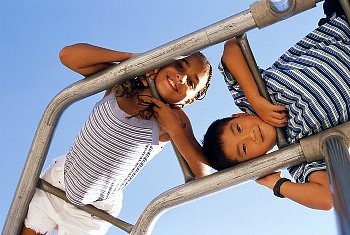Submitted by: Janet Nowlin
School: Hermitage Technical Center
Summary
Kids are pretty technologically savvy these days. In today’s culture, with movies, video games, IPods and computers, kids are getting further removed from the playgrounds of our youth. As kids get older and technology provides new avenues of diversion, jungle gyms and swings seem so antiquated. In this series of lessons, students are asked to project 50 years into the future and create a playground for that time period. Students will organize themselves into groups of three or four to design the ideal playground. The scenario is to envision a playground in the year 2061 that children will enjoy. In their groups, students will brainstorm the technologies of this future time period, explore ideas concerning what children of this time period will enjoy, discuss various types of equipment that would be included in the playground, the surface of the playground and other important aspects. This playground prototype can be designed using Google Sketch Up or any other software available on student laptops. The design must incorporate active play, fun and social interaction. The playground should be a place where parents can bring elementary school children and feel that their children have a safe environment to enjoy and explore. The student teams will create a visual design and a presentation that describes or demonstrates the functions of the design. Presentations must be persuasive and convincing to a prospective venture capital investor.
TIPC Ratings
Target: Students will use advanced search features of various search engines and directories to locate information and research how scientific and technological innovation can affect the future of playground design. During this research stage, students will produce an artifact of their research and brainstorming sessions, i.e., hand sketch of playground design along with an outline of the purpose of the technologies used to build the playground. Students will determine the digital tools they will use to design their playground model.
Target: Students collaborate in groups and combine their research knowledge to select the best solution to design a safe, unique, child-friendly playground of the future. Students are encouraged to seek out and connect with experts in the field of playground design and entertainment technologies via email, blog sites and social media websites. Students determine the best multi-media presentation method to present their solutions to an audience of peers. Group websites and video conferences were some of the presentation options used by the class. A bonus activity includes students connecting with elementary school students at a nearby school to obtain feedback on their playground design. Students engage in peer evaluation to debrief and reflect on successful designs and strategies to improve their presentation delivery to the class.
Target: During this project, students discuss social issues that relate to the design of their playground and that affect social behavior. For example, they ask questions within their individual groups that stimulate critical thinking and problem solving. Questions such as “How will we exercise in the future; How will we stay healthy in our changing technological society; How will social needs be met?” Through meaningful discussion they determine how this project encompasses academic areas (geometry, physical science, biological science, art) and how their playground designs are a blend of technology and other curricula. They apply their knowledge of technology and research to their design concept as they reflect on technological advancements in the field of playground design to forecast what might be possible in the future.
Target: Students work in groups to create innovative playground designs. They blend information compiled from their research, group discussions and creative ideas about the look and feel of future playgrounds. Strategic risks involve solutions that may appear to be scientific fantasy. However, through peer evaluation and reflection on playground designs, students create a design-based approach to this task that enables them to think beyond the parameters of the assignment and encompass more futuristic designs.





